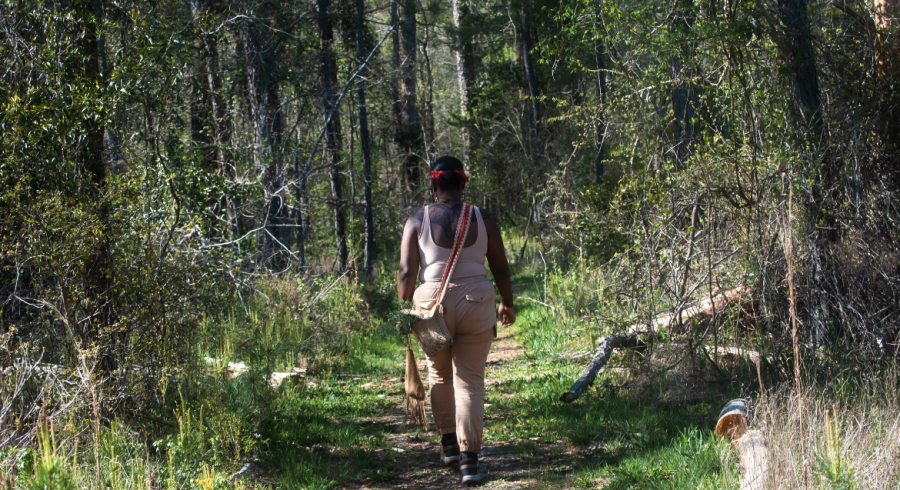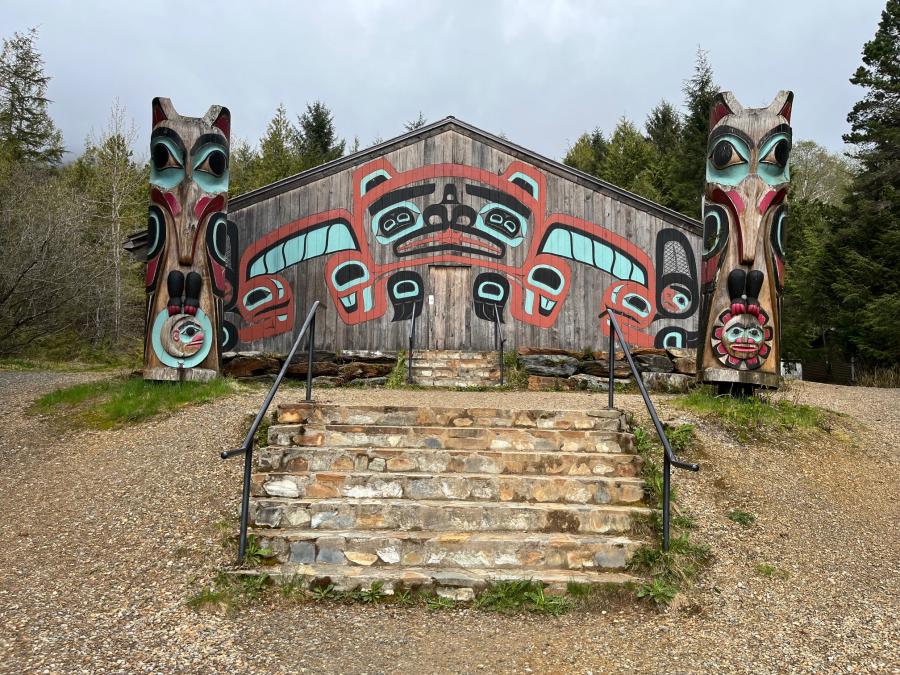Native American languages are disappearing. In Oklahoma last year, only 127 Pawnee (six percent) spoke their Native language; all were elderly. Out of a population of 2,500, there were only five fluent speakers of Osage in the Mississippi Valley; they, too, were aged. Only one person speaks Coos. SIL International's Ethnologue classifies 67 of 151 existing indigenous languages in the United States as nearly extinct. Efforts are underway to revive indigenous languages, but the obstacles are numerous and public sector support is often nonexistent. Although the Bilingual Education Act of 1968 (Title VII of the Improving America's Schools Act) made funding available for programs designed to help students with limited language proficiency master English, public funds support only one language revival program in the United States: The Council for the Development of French in Louisiana (CODOFIL, Conseil pour le Développement du Français en Louisiane). An effort to secure similar public-sector funding for Native American language preservation programs might prove successful if similar conditions -- an interest in cultural, economic, and tourist development -- are extant in other states.
CODOFIL
The French founded Acadia (La Cadie, later Acadie) in 1604 in what is now Nova Scotia, Canada. More than a century later it was ceded to the British; the Treaty of Utrecht gave Nova Scotia, along with its population of more than 1,000 French colonists, to Britain. American history textbooks accurately describe the subsequent Grand Dérangement -- the deportation of Acadians:
Fear that France might try to regain Nova Scotia (or Acadia) led the British government in 1755 to deport several thousand French inhabitants from the province.... Governor Shirley, fearing that in case of a French invasion they were likely to side with the enemy, had suggested their deportation as early as 1747. In 1755 the British dispersed them through the other English colonies instead of sending them off to Canada.... The circumstances of the deportations and the treatment of the refugees by the English colonists were unnecessarily cruel. (Blum et al., 1989)
Acadian arrival in Louisiana, first documented in 1764, continued until 1785, when seven boatloads of almost 1,600 immigrants arrived in New Orleans. (Brown, 1998) The name Acadien was soon shortened to Cadien and then "Cajun" by English-speaking neighbors.
In 1811, President James Madison signed the Louisiana Enabling Act and established the conditions under which Louisiana could become a state. It required the laws, records, and written proceedings of the new state to be in English. (U.S. English Foundation) The suppression of the French language in Louisiana schools was codified by the State Board of Education in 1916 in the Mandatory Attendance Act. French-speaking children were required to attend English-only schools. In 1921, a new Louisiana State Constitution stipulated: "The general exercises in the public schools shall be conducted in the English language" (CODOFIL, 1998), and even today, there exists a "small army of senior citizens who experienced [punishment for speaking French in school as children]." (David Cheramie of CODOFIL, personal communication)
According to Cheramie, following the advent of the American Civil Rights Movement in the 1960s, James Domengeaux was "single-handedly able to convince the Louisiana legislature and the Governor of the importance of preserving [Louisiana] French." In 1968, the Louisiana State Legislature authorized the Governor to establish CODOFIL, a council "empowered to do any and all things necessary to accomplish the development, utilization and preservation of the French language as found in the state of Louisiana for the cultural, economic and tourist benefit of the state." (La. R.S. 25:651 [2000], emphasis added) The State Department subsequently authorized the teaching of French as a second language in the elementary and secondary schools. 1974 saw an amendment to the State Constitution guaranteeing that "no law shall discriminate based upon culture." (Amendment Fourteen)
CODOFIL has since implemented immersion programs in French-speaking Louisiana which provide scholarships to French teachers to study French abroad. According to CODOFIL, more than 100,000 students across Louisiana study French today. In 1998, there were twenty-five French immersion schools in eight parishes (counties), where students took at least half of their classes in French. More than 200 teaching professionals from France, Belgium, Canada, Haiti, francophone Africa, and the rest of the francophone world work in Louisiana, but teacher recruiting programs and weekend immersion retreats are producing increasing numbers of local French teachers. Studying five years of French as a second language is mandatory in all schools, and adult literacy classes reach out to those who already speak the language.
According to the 1990 U.S. census, 1,070,691 Louisiana residents claimed francophone ancestry (about 25 percent of Louisiana's population); 407,319 of these claimed Acadian heritage.(1) 261,678 residents now speak French at home (not including Creole speakers). Other estimates put the number at 400,000-800,000. (www.codofil.org) CODOFIL reports a 14.5 percent increase between 1980 and 1990 in the number of those between the ages of 5 and 17 who spoke French in Acadiana (Acadian Louisiana).
Cheramie cites tourism as "the most direct beneficiary of cultural resurgence"; Cajun culture's importance to Louisiana's economy is so important that the National Park Service has opened a new Cultural Interpretive Center, which is part of a chain of such centers (three of which are devoted to Cajun culture). Bruce Morgan, Director of Communications for the Louisiana Department of Culture, Recreation and Tourism, adds, "The French language is part of what we offer the public. Louisiana is not a state where tourism is based on natural attractions; people come for the food and the music, which are extensions of culture." But increased tourism is not the only benefit to the state: thousands of Louisiana's citizens now have a strong connection to their heritage -- one that grows stronger with each generation.
Native Languages
Applying such a model to Native languages is, at first glance, problematic. French is the language of colonizers, an established language with millions of speakers worldwide. Any comparison between French in Louisiana and Native languages in the United States and beyond should be sensitive to this difference. More important, the State of Louisiana's economic and tourist development was a priority, along with cultural development, in establishing CODOFIL and the state's immersion programs. Even the most optimistic observer does not propose tourism (or economic development) as a panacea to the problems of indigenous peoples. Besides, the plight of Louisiana (Cajun) French is not as dire as that of many indigenous languages; numerous Cajuns are reported to have limited proficiency in English, and while most Cajuns under 50 speak English as their first language and Cajun as their second, children actively speak Cajun to friends and family. (SIL International, 2000) Native language preservation programs, where the language is in a greater state of decline, may face bigger obstacles.
Yet there are compelling reasons to emphasize similarities between Cajun French and other endangered languages. Although French is an established world language, CODOFIL's efforts are to preserve Cajun French in particular. Cajun speakers can partially understand standard French, but Cajun is almost incomprehensible to standard French speakers. Like many Native American languages, Cajun French has been in decline. Moreover, it too has a history of being derided and suppressed; speakers are still stigmatized to some degree.
The stigma is, of course, the flip side of tourism. Visitors flock to Louisiana to see the exotic. Some tourists in Cajun country are not there in true appreciation of Cajun culture or history but in search of novelty. Arguably, native communities have suffered on account of the tourist trade (Hawaiian scholar and activist Haunani-Kay Trask calls tourism "the prostitution of Hawaiian culture"),(2) and efforts to promote language preservation in the interest of increased tourism would undoubtedly be offensive to many Native Americans. Yet tourism can often offer benefits as well as disadvantages. Casinos, for example, can provide tribes with the means of fighting more effectively for land and mineral rights, for example. (Gedi cks & Grossman, 2001) Tribes may decide that language and culture preservation justifies turning their communities into tourist attractions. Public-sector funding of language preservation efforts could be a boon for Native communities and activists.
Moreover, programs like CODOFIL were not established based solely on economic motives. It should be remembered that the first listed objective in establishing CODOFIL was the cultural benefit of the state of Louisiana. And it is surely no accident that CODOFIL was established in the same year as the Bilingual Education Act, whose purpose "was, and continues to be, aligned with Title VI of the Civil Rights Act." (OBEMLA, 2001) Furthermore, the recent passage of the Native American Languages Act (P.L. 101-407), whereby Congress made it the responsibility of the United States "to act together with Native Americans to ensure the survival of these unique cultures and languages," is an indication that legislators may be predisposed to support Native language preservation programs.
Should programs like CODOFIL be established to promote Native language revival, we might expect public initiatives in Native communities similar to those in Louisiana:
- Native American languages taught as second languages in elementary and secondary schools;
- Native American language immersion programs wherein students take at least 50 percent of their classes in Native tongues;
- teacher recruitment programs designed to make outside teachers obsolete;
- scholarship programs;
- weekend immersion programs for teachers;
- adult literacy programs;
- awards and discussion groups for Native American literature;
- newspapers and newsletters in Native American languages;
- grants and media outlets for Native American programming; and
- international and community relations programs in which Councils for the Development of Native American Languages represent states and municipalities at international events and help local businesses better incorporate Native languages.
An economic justification for the establishment of such programs needn't imply economic motivation.
The decision to pursue public funding of Native language preservation programs is, at the very least, a viable option. A plan partially driven by economics might not be the ideal method of gaining public sector support for language preservation programs and its implementation may be difficult, but it might prove successful where more politically sensitive strategies fail. It certainly seems to be working in Louisiana.
(1). Another 4,343 Louisiana residents claimed Belgian ancestry. Figures from the 2000 Census are due out in 2002. Data for languages spoken in Louisiana in 1960 (for comparison) seems to be unavailable.
(2). See Cultural Survival Quarterly, 24.:1.
References & further reading:
Blum et al. (1989). The National Experience: A History of the United States. Seventh Edition. Harcourt Brace Jovanovich.
Brown, A., Ed. (1998). Le Petit Guide d'Informations sur la Louisiane Francophone. Lafayette, Louisiana: Conseil pour le Développement du Français en Louisiane (CODOFIL).
U.S. English Foundation. http://www.usefoundation.org/view/11
Office of Bilingual Education and Minority Languages Affairs (OBEMLA) (2001, March 1).
SIL International (2000). Ethnologue: Languages of the World. Thirteenth Edition: Grimes, B. Ed., Pittman, R.S. & Grimes, J.E., Consulting Eds. http://www-01.sil.org/~simonsg/preprint/ELL2%20Ethnologue.pdf
U.S. Census Bureau. Census Data 1990. www.census.gov.
Article copyright Cultural Survival, Inc.


